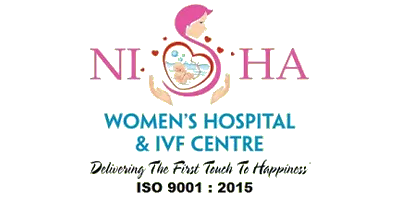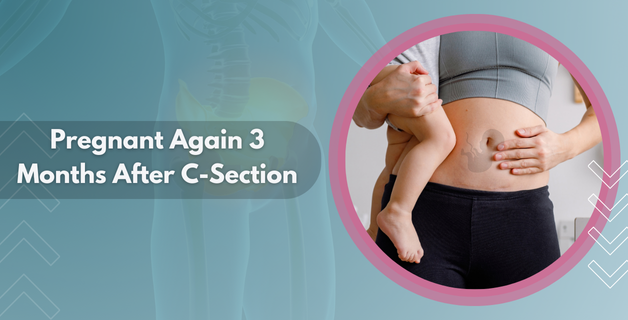Motherhood is an extraordinary journey—each pregnancy adds layers of joy, challenges, and transformations. But what happens when the next chapter begins just three months after a C-section?
“Pregnancy within three months of a cesarean section is considered high risk,” says Dr. Himali Maniar, of Nisha Women’s Hospital in Ahmedabad. “It is crucial to understand that the body, especially the uterus, needs time to heal. Without adequate recovery, the chances of complications in the next pregnancy increase significantly. My role is to guide women with tailored advice, ensuring both maternal and fetal safety.”
In this blog, we delve deep into the complexities of conceiving again so soon, exploring whether it’s safe, what medical experts recommend, and what risks to be aware of. With guidance from Dr. Himali Maniar, an acclaimed gynecologist in Bopal, Ahmedabad, we bring you evidence-based insights for a safer pregnancy journey.
Let’s get one thing straight—there’s a reason gynecologists worldwide recommend waiting before trying again.
How Soon Can You Safely Get Pregnant After a C-Section?
According to the World Health Organization, the optimal interpregnancy interval after a C-section is 18 to 24 months. This gap allows the uterine incision to heal completely, reducing the risk of uterine rupture or preterm birth in the next pregnancy. In India, where the cesarean rate has steadily increased to nearly 21.5% of births (NFHS-5), these considerations are particularly relevant.
Dr. Himali Maniar, a trusted gynecologist in Ahmedabad, explains:
“Giving your body the time it needs to recover helps build a healthier foundation for the next pregnancy. At our clinic in Bopal, we emphasize postnatal care and spacing strategies tailored to each woman’s reproductive goals.”
If pregnancy occurs before the recommended interval:
- The uterine scar may not be strong enough to withstand the stress of a growing pregnancy.
- Nutritional reserves may still be depleted, affecting both mother and baby.
- Increased risk of complications, including placenta previa, miscarriage, or preterm labor.
So what if you find yourself pregnant just three months after surgery? Let’s break it down.
Consequences of Conceiving Just 3 Months After a C-Section
Pregnancy so soon after surgery places your body under double the pressure—here’s what that could mean.
Heightened Risk of Uterine Rupture : This is the most serious complication. The uterine scar, if not fully healed, may tear during pregnancy or labor, posing a life-threatening situation.
Placental Complications : You’re more likely to develop placenta previa (placenta covers the cervix) or placenta accreta (placenta invades uterine wall), both of which can lead to heavy bleeding and require complex medical management.
Nutritional Deficiencies : The body may still be recuperating from the first pregnancy, leading to insufficient iron, calcium, and folate levels.
Emotional and Physical Exhaustion : Caring for a newborn while managing another pregnancy can affect mental health and recovery, especially with sleep deprivation and physical strain.
“We’ve seen cases where early conception post-C-section led to avoidable complications,” says Dr. Himali Maniar. “That’s why comprehensive counseling on family planning is essential. Every pregnancy deserves the safest beginning possible.”
Can the Uterus Heal Properly in 3 Months?
Here’s the truth: full healing of the uterine scar takes time—far more than three months.
A C-section involves cutting through multiple abdominal layers and the uterus. Healing is a gradual biological process that can take up to 6 months or longer for the scar to regain strength. By three months, external healing may appear complete, but internal tissues—particularly the uterine wall—may still be fragile.
Warning signs of incomplete healing include:
- Persistent abdominal pain
- Abnormal bleeding
- Pain during physical activity
- Weakness or fatigue
Ultrasound and pelvic examinations can help monitor healing, but even these may not fully guarantee the readiness of the scar to support another pregnancy.
Curious how this impacts early pregnancy symptoms? Let’s explore what you should watch out for.
Signs of Concern in Early Pregnancy After a C-Section
Early detection of warning signs can make a major difference. If you’re pregnant again soon after a C-section, watch for:
- Sudden, sharp abdominal pain could indicate scar tension or early signs of rupture.
- Vaginal bleeding or spotting, although common in early pregnancy, post-C-section pregnancies need careful evaluation.
- Dizziness or fainting may signal internal bleeding or low blood pressure.
- Reduced fetal movement, especially in the second trimester, warrants urgent attention.
- Persistent or throbbing pain at the scar site should never be ignored.
Dr. Himali Maniar advises, “Any symptom that feels unusual or severe should prompt immediate medical consultation. The earlier we intervene, the better we can manage outcomes for both the mother and baby.”
“Close monitoring during labor is essential,” emphasizes Dr. Himali Maniar. “We prepare with a multidisciplinary team approach to minimize risks and ensure optimal maternal care.”
Not sure when to seek help during such a high-risk pregnancy? Here’s your guide.
When Should You Consult a Doctor Immediately?
Every pregnancy is unique, but some situations require urgent care—especially post-C-section.
Seek medical help immediately if you experience:
- Heavy vaginal bleeding
- Intense cramping or contractions
- High fever or chills (possible infection)
- Leaking amniotic fluid
- Difficulty breathing or chest pain
Even if symptoms seem minor, it is better to err on the side of caution. High-risk pregnancies need proactive medical intervention.
Still got questions? We answer some common concerns in our FAQ section.
Frequently Asked Questions
Is it possible to carry a healthy pregnancy after a short C-section interval?
Can the C-section scar open during early pregnancy?
What lifestyle precautions should I take during this pregnancy?
Will this pregnancy automatically require a C-section?
How soon after this pregnancy should I wait before planning again?
References:
https://www.who.int/news-room/fact-sheets/detail/family-planning-contraception
https://www.healthline.com/health/pregnancy/pregnancy-after-c-section
Disclaimer: The information shared in this content is for educational purposes only and not for promotional use.

